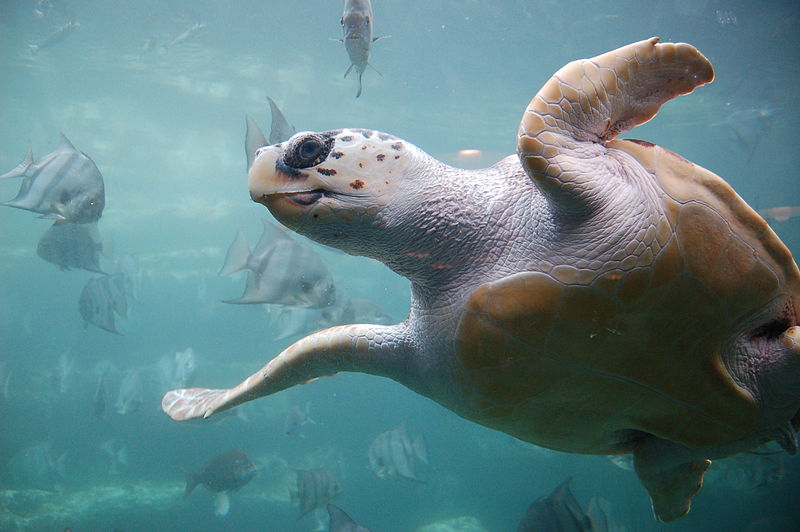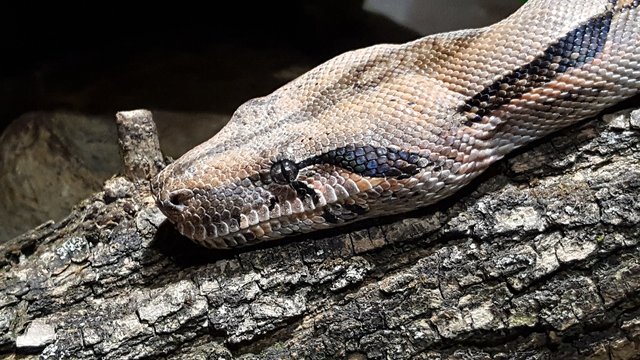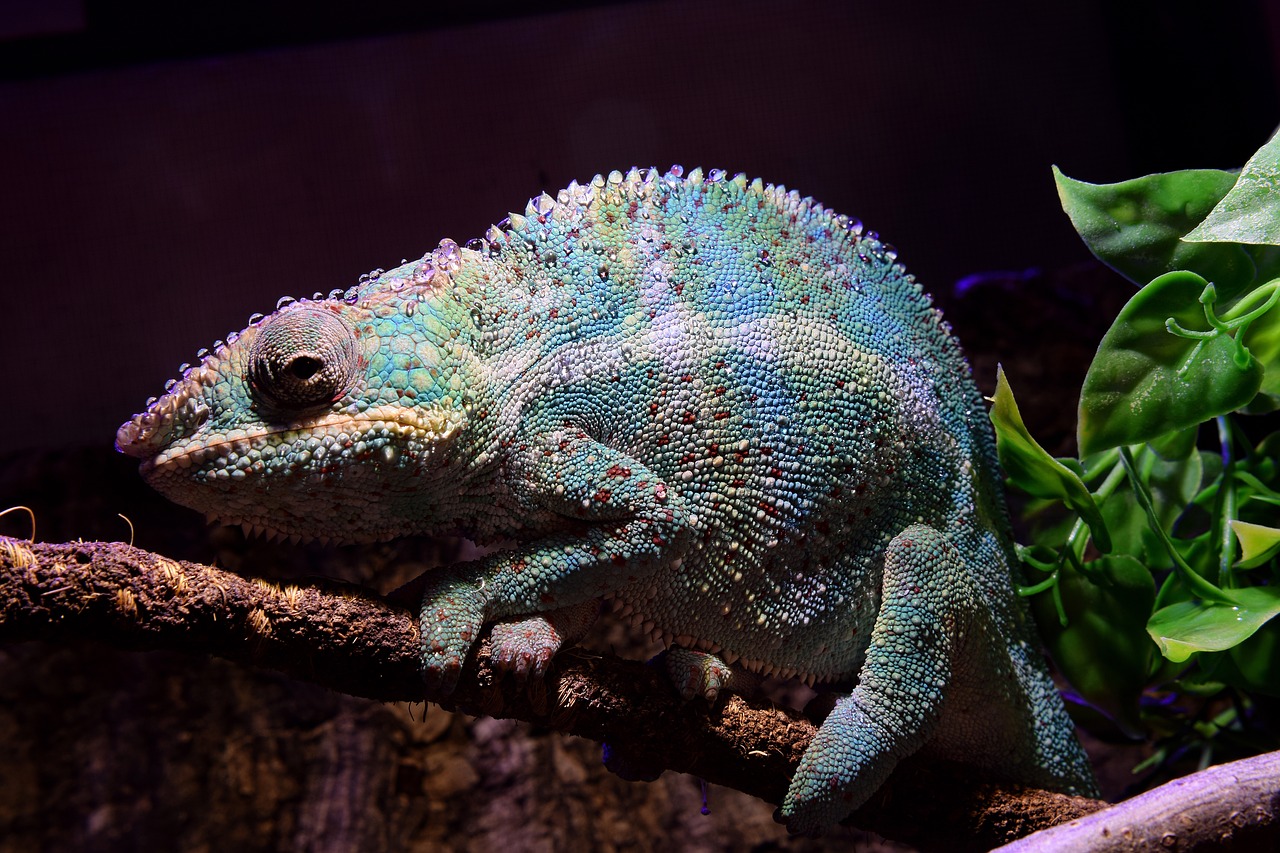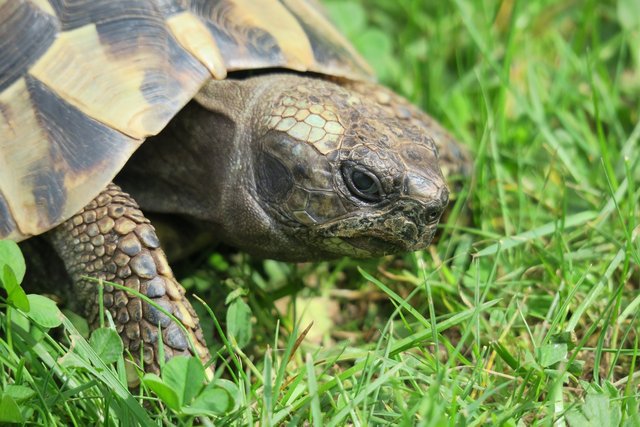50-Year Old Puzzle Cracked Just This May, 2018! Scientists Found The Reason Temperature Alteration Changes The Gender Of Baby Turtles Into Opposite Gender (Research-based)
There are two categories of sex determining mechanisms in reptiles known as:
- Genotypic sex determination (GSD), and
- Temperature-dependent sex determination (TSD)

[A sea Turtle. Image source: Wikimedia commons. Author: Ukanda. CC BY 2.0 licensed]
Genotypic sex determination
Species of reptiles found under genotypic category have sex chromosomes which are identical with those found in mammals and birds. Like mammals, some species of turtle and lizards — green iguana — have X and Y chromosomes with females being homogametic, that's having two identical X chromosomes (XX) whereas males are said to be heterogametic, that's having one X chromosome and one Y chromosome (XY).
Other reptilian species that do not fall under the above mammalian-like subcategory of GSD, are governed by a type of GSD found in bird where Z and W represents the sex chromosomes. Here, males are homogametic with two identical Z chromosomes (ZZ) whereas females are heterogametic with one W chromosome and one Z chromosome (ZW). This is mostly found among snakes.
Temperature-dependent sex determination
In the case of temperature-dependent sex determination, it is the condition of the environmental temperature during certain stage of embryonic development that determines whether it hatches into a male or female reptile. The temperature effect begins to affect the eggs after they have been laid. Hence, sex determination in these reptiles are as a direct result of external temperature condition around the egg clutches in the nests — whether environmental temperature is high or low. For example, eggs of many turtle species would hatch into males under low environmental temperature condition around the nests and into females when kept under warmer temperature environment.
For a common pond and pet turtle called the red-eared slider, for example, eggs incubated at 32 degrees Celsius (nearly 88 Fahrenheit) produce all female hatchlings, while those kept at 26 degrees Celsius (79 Fahrenheit) hatch as males.
This phenomenon was first discovered in reptiles more than 50 years ago, but until now the molecular details were a mystery [1].

[Image source: Pixabay CC0 licensed]
The molecular details of the biological thermometer that turns a developing turtle into male or female
For more than 50 long years, many scientists have sought to determine the molecular basis as to what is responsible for a phenomenon whereby a normally developing (say) male turtle is suddenly and biologically turned into a female turtle and vice versa.
A team of researchers at Duke University in collaboration with scientists from Zheijiang Wanli University in China, have announced that they have found molecular explanation to the sudden change of sex observed during a critical period of embryonic development in turtles. According to a team, the explanation lies not in the DNA sequence itself -- the A's, T's, C's and G's -- but in a molecule that affects how genes are expressed without altering the underlying genetic code [1].
"Temperature-dependent sex determination has been a puzzle for a really long time," said Blanche Capel, a cell biology professor at Duke who led the research. "This is the first functional evidence of a molecular link that connects temperature with sexual development." Source
During the research, the scientists discovered that low incubation temperatures activate a key gene labeled kdm6b in the baby (or embryonic) turtle's sex organs. This activated key gene acting as a biological "on" switch, also excites other genes, triggering off the processes leading to testes development.

[Image source: Pixabay CC0 licensed]
Researchers did something very interesting to show that Kdm6b gene is the determining gene and its activation or deactivation is what's responsible for what sex a baby or young turtle will eventually develop into. They first took some freshly laid turtle eggs and incubated them at 26 or 32 degrees Celsius respectively and then closely inspected them to spot the differences in the way genes were activated or turned on within the turtle's sex organs early in development (that's before they are changed into ovaries or testes).
Previously, when the scientists examined the behaviors of the genes over this interim, they found that a lot of genes were either activated or deactivated at one temperature but not at all temperatures. However, Kdm6b was among the first group of genes to became active and became very much more agile at cooler temperatures which favor male production, and was also found to be silent or inactive at warmer temperatures, which favor female production.
In the new experiment, the scientists employed a technique developed by Zhejiang Wanli University collaborators to suppress Kdm6b gene within the sex organs of the turtles and then observed how it affects their sexual development [1]. They found that when Kdm6b gene is silenced, then a growing turtle embryo that's subjected to temperatures that would have otherwise produce a male with testes, were transformed into a female with ovaries instead.

[Image source: Pixabay CC0 licensed]
Additional experiments revealed that Kdm6b gene encodes a group of proteins that interact with a genome region known as Dmrt1, which acts as a master switch to turn on testis development [1].
In a study published May 11 in the journal Science, researchers say they have finally identified a critical part of the biological "thermometer" that turns a developing turtle male or female. Source
Conclusion
The world we live in is such a sophisticated puzzle. How alteration of temperatures determines what becomes the sex of some reptiles, is surely one of such many puzzles. It is interesting to know however that a 50-year old problem with respect to what is responsible for this and how it came to be, is finally answered scientifically. Thanks for reading.
References for further reading
- [1] How turning down the heat makes a baby turtle male
- How is the gender of some reptiles determined by temperature?
- How turning down the heat makes a baby turtle male
- What causes a sea turtle to be born male or female?
Yours truly,
@eurogee
Follow @eurogee, the Steemit's Witness Voting Advocate & Host, Show Us Your Witnesses Weekly Contest. Follow @euronation, An International Support Scheme For New And Struggling Steemians
Join us on Telegram and whatsaap through the below links:

Don't Exit Without Voting For Witnesses!
No Witnesses = No Steem Blockchain; If You Truly Love Here, Vote For Witnesses NOW!
Click This Link To Vote Now
Witnesses are equivalent to life and blood of steem blockchain. Without them, the blockchain will seize to function and we will all be stranded here. Click here to read more on why it is important to vote for witnesses


kool stuff , sea turtle pic is amazing , mother nature is way ahead
interesting
basically on point.
The boss, this is superb
An interesting read.
It's cool to learn something new
Very grateful. Of course I will support as much as I can.
@eurogee
Omg. But what if the water is neither warm nor cool? I wonder what kind of turtles will come out?
Hahahahahsh read this..
Thanks for reading
@eurogee of @euronation community
So if it's just normal temperature it's a mix of genders? Is that the case? :D
@therealwolf 's created platform smartsteem scammed my post this morning (mothersday) that was supposed to be for an Abused Childrens Charity. Dude literally stole from abused children that don't have mothers ... on mothersday.
https://steemit.com/steemit/@prometheusrisen/beware-of-smartsteem-scam